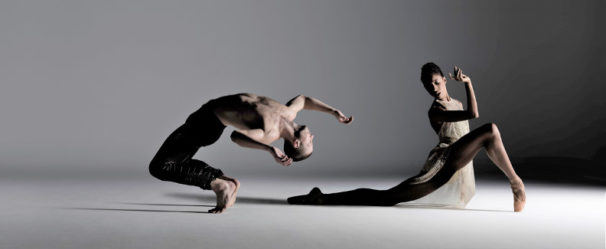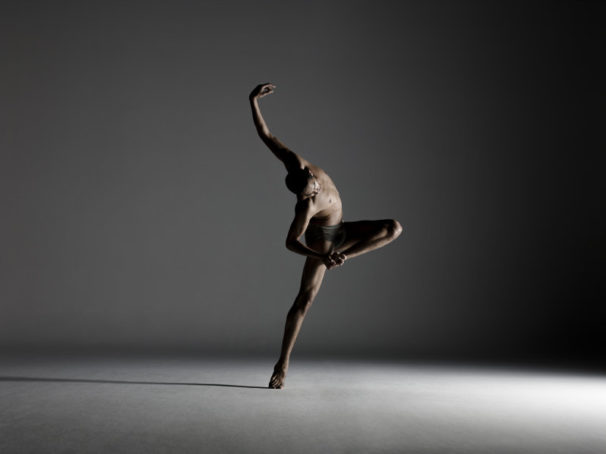
It was the United States of Segerstrom last night when the nation’s Capital of COVID-Containment relocated (for just one night, Dr. Fauci) to Costa Mesa, California. There, the much-vaunted performing arts center at least somewhat righted the pandemic cataclysm by launching its season with a knockout dance performance. An upbeat cluster of up to 1,500 people went to lengths to attend the one-night-only glorious live showcase of the San Francisco-based Alonzo King Lines Ballet. (The evening was an all-Cali affair.) It required cooperation with public health measures and willingness to provide proof of same to cross the theater threshold. It meant sitting through a performance in a face mask, both to protect oneself, but also one’s seat neighbor. It meant enduring this inconvenience throughout the performance. And, glory be, when houselights came up, both at intermission and after the show, there they were. Hordes of audience members in face masks. And this, alas, is headline news: Sanity, manners, community, and reason prevailed in Orange County last night.
It gave hope. The reward for all this rigamarole — Segerstrom has implemented stringent cleanliness paradigms — was evident during the curtain call. Met by thunderous applause, the dancers, the only unmasked folk in the house, broke into wide, beaming, unforced smiles. That was so nice to see! Then and there, a feeling that it sure is nice to be alive and be able to see a show zinged around Segerstrom Hall.
And then there was the show. When the curtain rose, did I hear a (muffled!) gasp? There was more than a modicum of shock and awe to witness Lines Ballet’s posse of ‘extreme’ dancers, the slender, long-limbed creatures whose “lines” attract this choreographer’s eye. How did they stay in shape for 18 months? Where were their “COVID-20” pounds? I didn’t seen an extra ounce! Did they still have muscles? Would they just topple over? They who claw their way through Mr. King’s thicket of voracious, air-grasping body-formulations. The ones in which legs, reaching and stretching, act like arms. And whose arms, swaying and flailing, behave like legs. And whose long torsos undulate in between.

Did Mr. King never tire of drawing stick figures as a child? Or bending and shaping pipe cleaners? For he seems to take geometric perfection as his gold standard. And it’s truly interesting to watch his highly individualistic dancers (he fielded 12) grapple with that standard. Good lord, they are good. There is Mr. King’s muse, Adji Cissoko, a stringbean in pointe shoes, who has never met a convoluted shape she could not achieve, and hold. Babatunji, black and beautiful, an amazing dancer. Michael Montgomery with his mop-top hair. They were all fantastic. A short(er) dancer with a cute pixie haircut … reminded me of Christine Sarry of ABT. It was a satisfyingly long (if repetitive in terms of the dance vocabulary) program: the first half comprising ballet excerpts (outstanding was Rasa, a work dating to 2007), and the second half, the rollout of a major work, Azoth to music by two jazz giants, Charles Lloyd and Jason Moran. This latter dance, comprising ten chapters, premiered in October 2019, a few months before the music stopped.

Inspired by metallurgy, which is a cool subject, Azoth opened with three installed lighting devices, rectangular heat-light-looking contraptions, lowering from the ceiling and bearing down on four dancers. They functioned both as visual elements (give us more … I am so very sick of bare stages!) and as strange force fields. Robert Rosenwasser’s costumes included some of the prettiest filmy dance-dresses I’ve seen; a kooky costume resembled a tutu with little wings at the hips. Some men wore cobalt-blue wide-legged trousers that functioned like man-skirts; another guy wandered on stage in what we used to call “cut offs,” a knee-length pant that is popular at the beach. Casual beauty marked the way these costumes combined. The troupe launched in, at first quietly, to Jason Moran’s solo piano music. The music got tougher as it went. Tough, as in assaultive. Then came the loopy stretchy poses, the raised arms, the knees raised real close to the body, the tippy toes, the lunges, all lugubrious. And here, the repetitiveness: It’s a lot of solo dancers, rarely touching, often moving in unison, and nearly always standing. Ya’d think that dancers would nearly always stand, wouldn’t you. But LINES dancers must have very sore feet at evening end. The entire thing is “vertical.”
Azoth has a rare episode with a clear narrative. One tall male dancer enters, clearly distressed. He’s antisocial, he pushes others away, he’s violent. But rather than recoil, the group of dancers reaches out to soothe him. They can’t fix him, but what matters is that his craziness doesn’t transfer to the group. Watching this, the house was very silent. It was akin to seeing our own society’s brokenness. Everyone in the room seemed to understand and receive this. It was sad. I do wish Mr. King could clip it, as it went on just a tad longer than it needed for impact.
The gentle giant Alonzo King, a puppetmeister in a pork-pie hat, was present in the hall, chatting with friends and fans. It was a good vibe, a good re-start, and we loved it. I’ve sat in a few theaters in my time but never, ever, one so quietly attentive. Yes, we were masked. But wow, there was also an electric current of dance-tracking of assuredly difficult work. I think the dance audience grew last night. Segerstrom Center, let’s do it again.
